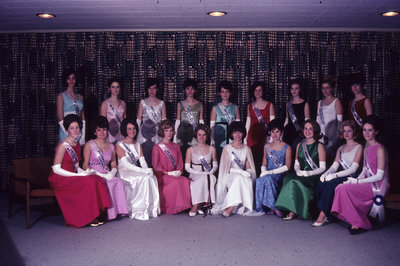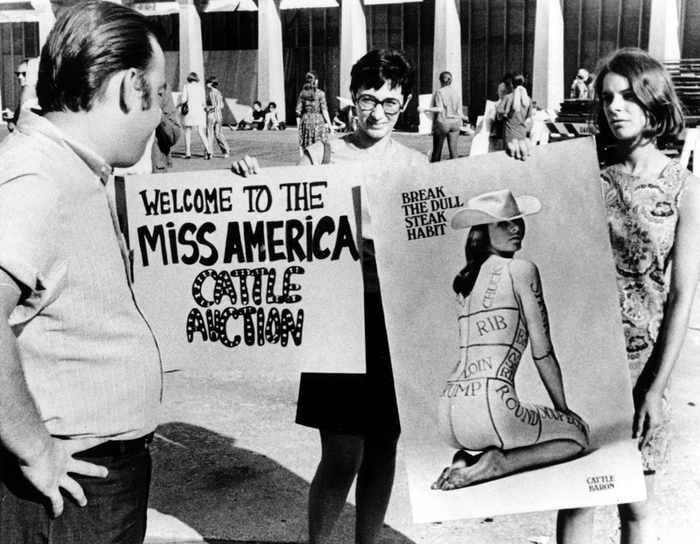Beauty Pageants
Beauty pageants have been used in North America throughout the twentieth century to promote specific ideas of beauty and respectability, while also acting as venues for people to challenge ideas of race and gender. Major pageants, such as the Miss America Pageant, as well as smaller, local pageants reinforced ideals of white, middle-class womanhood and discouraged pageant contestants from discussing controversial events and topics.
By the mid-twentieth century, second wave feminists questioned the meaning of beauty pageants and used them as an opportunity to protest and debate the objectification of women’s bodies. As historian Georgia Paige Welch argues, the most notable example of second wave feminists protesting beauty pageants occurred at the 1968 Miss America Pageant where women’s liberation groups from across America gathered outside the pageant to accuse it of being “sexist,…racist, ageist, capitalist and pro-war". In an act of defiance against beauty standards, women at this protest threw bras, high heels and other items typically relating to femininity into a ‘freedom trashcan’, which sparked the iconic image of the ‘bra burner’ feminist. This protest has even been noted as the first large-scale event in the women’s liberation movement in America.
This video presents footage of the protests held at the 1968 Miss America Pageant: https://app.nimia.com/video/104946/1960s-bra-burning



